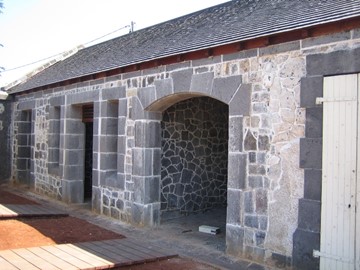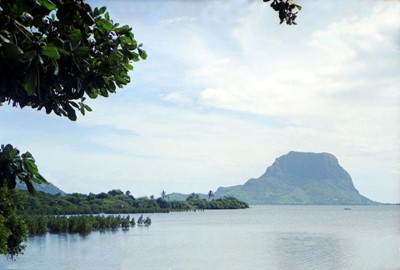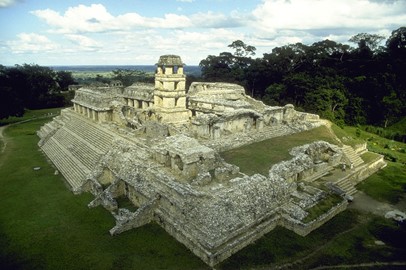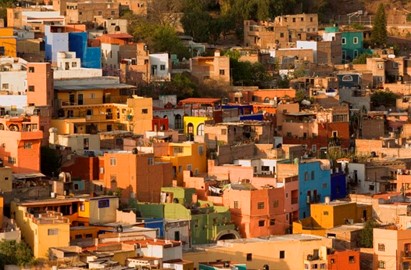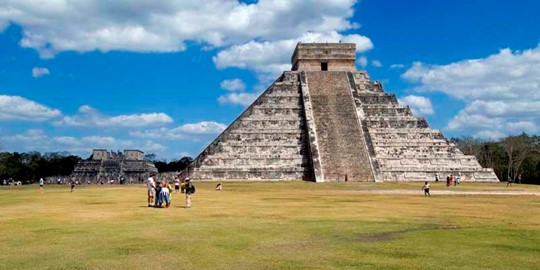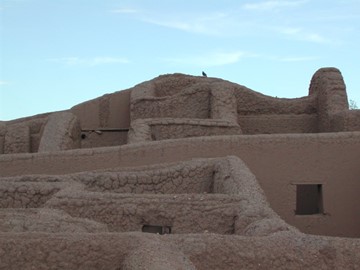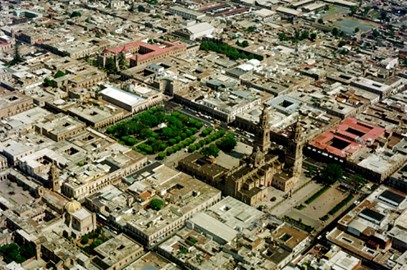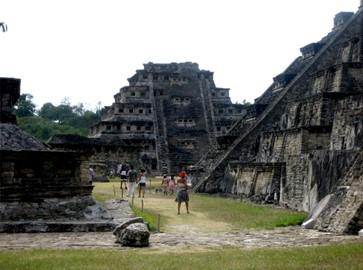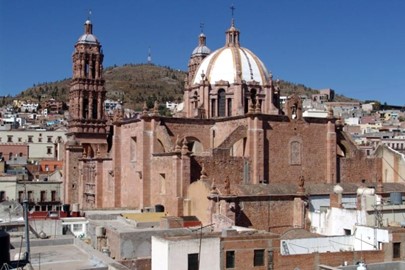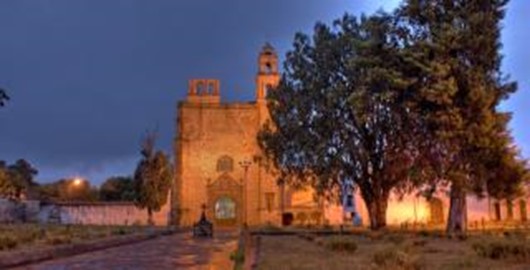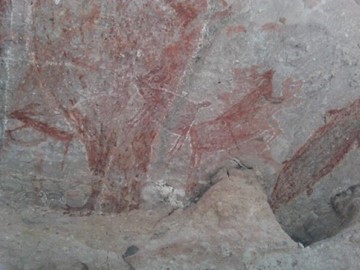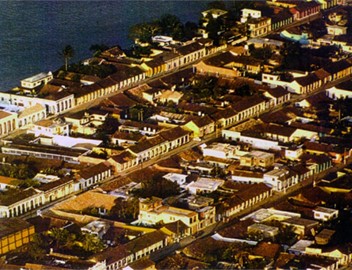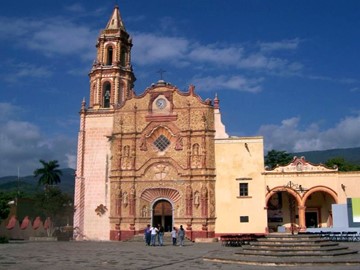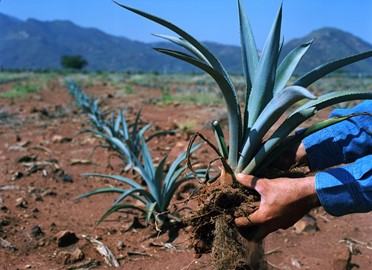category :: cultural
Ksours in Mauritania
The Ksours of Ouadane, Chinguetti, Tichitt, and Oualata, a UNESCO World Heritage site in Mauritania, are historic fortified settlements in Mauritania, renowned for their unique desert architecture and cultural significance. These ancient trading hubs, dating back to the 11th and 12th centuries, feature stone-built houses, mosques, and winding streets that reflect a blend of Islamic and Saharan influences. Once thriving centers of commerce and scholarship along trans-Saharan routes, they preserve manuscripts... Read More
Aapravasi Ghat
Aapravasi Ghat, a UNESCO World Heritage site in Mauritius, served as an immigration depot from 1849 to 1923, where over half a million indentured laborers from India arrived to work on sugar plantations. Built in 1849, this historic complex includes remnants of the original structures like the steps, hospital block, and sheds, reflecting its role in the global migration of labor during the colonial era. It stands as a testament to the indentured labor system that shaped modern Mauritius and influenced plant... Read More
Le Morne
Le Morne Cultural Landscape, a UNESCO World Heritage site, is a rugged mountain peninsula in Mauritius that served as a refuge for escaped slaves in the 18th and 19th centuries. Its dramatic cliffs and surrounding lagoon highlight its natural beauty, while its historical significance lies in its role as a symbol of resistance against slavery. The site includes remnants of settlements and a poignant memorial commemorating the struggles of the maroon community. Today, it stands as a testament to human resilie... Read More
Palenque
Palenque, a UNESCO World Heritage site in Mexico, is an ancient Maya city renowned for its well-preserved architecture, intricate carvings, and historical significance. Flourishing between 600 and 800 CE, it features notable structures like the Temple of the Inscriptions, the tomb of King Pakal, adorned with elaborate hieroglyphs and artwork. This archaeological gem offers a window into Maya civilization, showcasing advanced engineering and cultural achievements.
Mexico City and Xochimilco
Mexico City, the vibrant capital of Mexico, is a bustling metropolis known for its rich history, cultural landmarks, and dynamic urban life. Within this sprawling city lies Xochimilco, a UNESCO World Heritage site famous for its ancient canal system and colorful trajineras (traditional boats). This historic borough, dating back to pre-Columbian times, offers a unique blend of natural beauty and cultural heritage, with its floating gardens and lively markets attracting visitors from around the world. Togethe... Read More
Teotihuacan
Teotihuacan, a UNESCO World Heritage site in Mexico, is an ancient Mesoamerican city renowned for its massive pyramids, including the Pyramid of the Sun and Pyramid of the Moon, built between the 1st and 7th centuries CE. This archaeological marvel features a well-planned urban layout with residential complexes, temples, and the Avenue of the Dead, reflecting the sophisticated culture of its mysterious inhabitants. Abandoned centuries before the Aztec arrival, its origins and decline remain enigmatic, makin... Read More
Oaxaca and Monte Albán
Oaxaca and Monte Albán, a UNESCO World Heritage site in Mexico, showcase a rich blend of indigenous Zapotec and Mixtec cultures alongside colonial Spanish influences. Monte Albán, an ancient ceremonial center perched atop a flattened hill, features impressive pyramids, plazas, and intricate stone carvings dating back to 500 BCE. Oaxaca City, the nearby cultural hub, charms with its vibrant markets, colorful architecture, and traditional cuisine, including renowned mole sauces. Together, they offer a concise... Read More
Puebla
The Historic Centre of Puebla, a UNESCO World Heritage site in Mexico, is renowned for its well-preserved colonial architecture, blending Spanish and indigenous influences. Founded in 1531, it features notable landmarks like the Puebla Cathedral, one of the country’s largest, and vibrant Talavera-tiled buildings. Its urban layout, with a grid pattern radiating from the central plaza, reflects 16th-century planning. The site’s cultural significance and historical charm make it a key example of Mexico’s colon... Read More
Guanajuato
Guanajuato, a UNESCO World Heritage site in Mexico, is renowned for its rich colonial history, vibrant culture, and stunning architecture. This picturesque city features colorful buildings, winding cobblestone streets, and historic silver mines that once fueled its prosperity. Notable landmarks include the iconic Basilica of Our Lady of Guanajuato and the eerie yet fascinating Mummy Museum. Its unique underground street system and lively festivals, like the Cervantino International Festival, further enhance... Read More
Chichen Itza
Chichen-Itza, a UNESCO World Heritage site, is an ancient Mayan city renowned for its impressive architecture and historical significance. The site features the iconic El Castillo pyramid, a testament to Mayan astronomical knowledge with its 365 steps representing the days of the year. Other notable structures include the Great Ball Court and the Temple of the Warriors, reflecting the city's cultural and political importance during its peak between the 7th and 13th centuries. Today, it stands as a well-pres... Read More
Paquimé
The Archaeological Zone of Paquimé, Casas Grandes, a UNESCO World Heritage site in Mexico, showcases a remarkable pre-Columbian settlement from the 13th and 14th centuries. This ancient city, built by the Mogollon culture, features sophisticated adobe architecture, including multi-story buildings, ceremonial spaces, and an advanced water management system. Its unique blend of Mesoamerican and Southwestern influences highlights its role as a major trading hub, offering insights into the cultural complexity o... Read More
Morelia
Historic Centre of Morelia, a UNESCO World Heritage site in Mexico, is renowned for its well-preserved colonial architecture and historical significance. Founded in 1541, the city boasts a stunning historic center with over 200 buildings constructed from pink Cantera stone, including the majestic Morelia Cathedral. Its urban layout and cultural traditions, such as the annual International Music Festival, reflect a harmonious blend of Spanish and indigenous influences, making it a captivating destination for... Read More
El Tajin
El Tajín, a UNESCO World Heritage site in Mexico, is an ancient Mesoamerican city renowned for its impressive architecture and cultural significance. Flourishing between 600 and 1200 AD, it was a major center of the Classic Veracruz culture, featuring over 150 structures, including the iconic Pyramid of the Niches with its 365 recessed squares symbolizing the solar year. The site also boasts numerous ballcourts, intricate stone carvings, and evidence of advanced urban planning, reflecting the sophistication... Read More
Zacatecas
The Historic Centre of Zacatecas, a UNESCO World Heritage site in Mexico, is renowned for its well-preserved colonial architecture and rich history rooted in silver mining. Established in the 16th century, the city features striking pink stone buildings, ornate churches like the Zacatecas Cathedral, and a unique urban layout shaped by its mountainous terrain. Its cultural significance and historical charm make it a standout example of Spanish colonial influence in the Americas.
Popocatepetl Monasteries
The Popocatepetl Monasteries, a UNESCO World Heritage site in Mexico, are a collection of 14th and 15th-century monasteries built by Augustinian, Franciscan, and Dominican friars. These well-preserved structures showcase a unique blend of European architectural styles adapted to the local environment, reflecting the early evangelization efforts in the New World. Notable for their historical and cultural significance, the monasteries feature impressive frescoes, altarpieces, and layouts that influenced later... Read More
Rock Paintings of the Sierra de San Francisco
The Rock Paintings of the Sierra de San Francisco, a UNESCO World Heritage site, feature prehistoric art created by the indigenous Cochimi people. Dating back thousands of years, these well-preserved murals depict humans, animals, and abstract forms in vibrant red, black, and white hues, offering insight into ancient cultural and spiritual practices. Discovered in a remote desert region, the site includes hundreds of caves and rock shelters, recognized for their historical and archaeological significance.
Uxmal
Uxmal, a UNESCO World Heritage site in Mexico, is a remarkably preserved ancient Mayan city known for its intricate stone architecture and historical significance. Flourishing between 600 and 1000 AD, it features the towering Pyramid of the Magician, the ornate Governor’s Palace, and a sophisticated quadrangle layout, showcasing Mayan engineering and artistry. The site reflects a rich cultural legacy, with structures adorned with detailed carvings of deities, geometric patterns, and astronomical alignments.... Read More
Querétaro
Querétaro, a UNESCO World Heritage site in Mexico, is renowned for its well-preserved colonial architecture, featuring a historic center with cobblestone streets, ornate churches, and elegant plazas. Founded in 1531, it blends indigenous and Spanish influences, evident in landmarks like the Aqueduct of Querétaro and the Church of Santa Rosa de Viterbo. The city played a key role in Mexico’s independence movement, hosting significant historical events. Today, it’s a cultural hub, attracting visitors with its... Read More
Hospicio Cabañas
Hospicio Cabañas, a UNESCO World Heritage site in Mexico, is a historic complex renowned for its architectural beauty and cultural significance. Founded in the late 18th century as a hospital, orphanage, and almshouse by Bishop Juan Cruz Ruiz de Cabañas, it features a neoclassical design by architect Manuel Tolsá. The site is celebrated for its stunning murals by José Clemente Orozco, including the masterpiece 'The Man of Fire,' which adorn its chapel. Today, it serves as a cultural center, showcasing art a... Read More
Tlacotalpan
Tlacotalpan, a UNESCO World Heritage site in Mexico, is a charming colonial town renowned for its well-preserved Spanish architecture and vibrant cultural traditions. Founded in the 16th century along the Papaloapan River, it features colorful buildings, broad streets, and a laid-back atmosphere that reflects its historical significance as a trading hub. The town’s unique blend of indigenous, Spanish, and Caribbean influences is evident in its music, cuisine, and annual Candelaria festival, making it a capt... Read More
Campeche
The Fortified Town of Campeche, a UNESCO World Heritage site in Mexico, is a well-preserved example of a colonial port city defended by an extensive fortification system. Established in the 16th century, it features a historic urban layout with colorful buildings, cobblestone streets, and notable structures like the Cathedral of Our Lady of the Immaculate Conception. Its strategic walls, bastions, and forts, built to protect against pirate attacks, reflect a blend of Spanish and indigenous influences, makin... Read More
Xochicalco
Xochicalco, a UNESCO World Heritage site in Mexico, is a remarkably preserved pre-Columbian archaeological zone known for its intricate architecture and cultural significance. Flourishing between 650 and 900 CE, it served as a political, religious, and commercial hub, blending influences from Teotihuacan, Maya, and Zapotec civilizations. The site’s highlights include the Temple of the Feathered Serpent, adorned with detailed carvings, and an advanced underground observatory for tracking celestial events. It... Read More
Franciscan Missions in the Sierra Gorda
The Franciscan Missions in the Sierra Gorda, a UNESCO World Heritage site in Mexico, are a remarkable example of 18th-century colonial architecture and religious heritage. Built by Franciscan friars between 1750 and 1760, these five missions—featuring ornate facades and intricate Baroque designs—served to evangelize indigenous communities. Their historical significance and well-preserved condition highlight their role in shaping the region’s cultural landscape, earning them global recognition.
Luis Barragán House and Studio
The Luis Barragán House and Studio, a UNESCO World Heritage site in Mexico, is a masterful example of modern architecture designed by the renowned architect Luis Barragán between 1947 and 1948. This iconic residence showcases his innovative use of color, light, and space, blending traditional Mexican elements with minimalist design. Preserved as a museum, it offers insight into Barragán’s creative process and remains a testament to his lasting influence on global architecture.
Tequila
The Agave Landscape and Ancient Industrial Facilities of Tequila, a UNESCO World Heritage site in Mexico, showcase a unique blend of natural and cultural heritage in Mexico. This region features expansive blue agave fields, cultivated for centuries to produce tequila, alongside historic distilleries and haciendas that reflect traditional production methods. Recognized for its significance in shaping tequila’s global identity, the site highlights the interplay between agriculture, industry, and cultural trad... Read More

